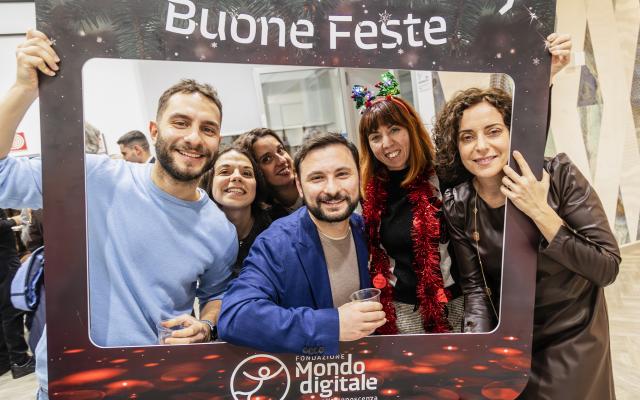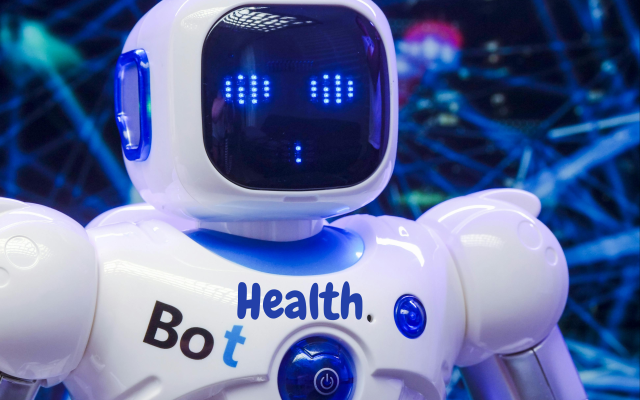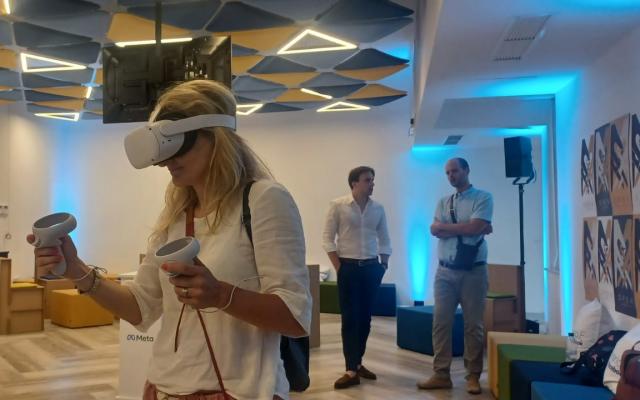The challenges of digital transformation in the healthcare sector in the next meeting of Vagone FMD
What are the concrete applications of the metaverse in healthcare? Can we already speak of a “mediverse” composed of medical sectors such as virtual hospitals or interactive educational spaces in the metaverse? This issue was addressed by the seventh meeting of Vagone FMD. From 01 to 100 in the Metaverse, held on January 11 Binario F. Here is a summary of the ideas that emerged by OneliaOnorati.
INTRODUCTORY SESSION
Alfonso Molina, Scientific Director, Fondazione Mondo Digitale – the people interested by the initiatives fielded by FMD often have difficulties or lesser opportunities, like refugees, unemployed, and elders. Illness is another condition of fragility. The metaverse has influenced our cognitive capabilities and this is reflected in the health sector and in our approach to illness. At present, the metaverse is a vision, an environment that will host a range of converging technology, an ecosystem that will slowly become multisensorial and address various perceptions, driving the cognitive change that I mentioned earlier. The result of this will not be a formula, but rather a thought, an idea, a taste of what the world will be in twenty years.
Costanza Andreini, Public Policy Manager Italy, Meta – one of the most natural applications of the metaverse is the medical area. Meta is extremely motivated todrive this application.
Pier Luigi Ingrassia, President, Italian Society for Simulation in Medicine, and Coordinator, Technical Table on Health Simulation – our reality, notwithstanding our contacts with doctors, is essentially to ensure the safety of patients through lifelong learning courses. We promote research and network sharing through a series of tools that promote the “analogue system.” We have been involved, for example, in experiments with 43 interactive clinical cases in a range of areas with 16 professors. In April, the Health Ministry officially recognized simulation in healthcare education. Italy is the first European member states to approve official guidelines. Naturally, this will all improve as the AI component increases and we will no longer have to rely on intermediaries.
Andrea Silenzi, Healthcare Director, General Direction for Health Prevention, Ministry of Health – the great added value of the metaverse can interest distance teamwork and disaster medicine (the most difficult and sporadic context) which has a significant volume of cases for specializing doctors. Initial critical points include the low basic digital skills of Italians. This calls for investments to implement technology such as the metaverse.
Massimo Canducci, Chief Innovation Officer, Engineering – there are those who believe the metaverse will never exist, while others think it will replace reality. Although the metaverse is not completely shaped yet, it is under construction. Its tools include research, innovation, and new technology. Indeed, augmented reality is an important pillar. The concept of the metaverse appears to be an evolution of the Internet, but this could change over time, depending on the technology that is involved. Decentralization, interoperability, and user respect are three characteristics that we believe will characterize the metaverse.
Federica Battisti, Professor, Department of Information Engineering, University of Padua – besides virtual and augmented reality, there is mixed reality, or the superimposition of computer graphics on virtual reality. PNRR funds will allow us to fund further research on digital twins. This will allow us to create virtual models of individuals to study them. The “mediverse” is a combination of blockchain, the Internet of Things, and AI, as in the case of the immersive technology we use to study emergency situations. We still lack tactile feedback, but this is being worked on through a variety of tools, including gloves that allow us to gauge the temperature and feel consistency. I believe four steps for the evolution of the mediverse could be: holographic construction (the simplest to create models), holographic simulation (adoption of models in virtual reality), creation of reliable avatars (realistic), and fusion of virtual reality and references to reality. This will require an international collaboration. The technology is around the corner. We already have instant codec avatar. Meta will allow us to develop such avatars from our smartphone webcam.
MartijnBoosman, Founder SimX (in video) – our metaverse proposals for the medical sector are not meant to replace traditional education, but to integrate it. It’s a “team training technology” that allow individuals in different places to simultaneously participate in simulations in the same environment.
Giacomo Gensini, CEO,Nume Plus – “SimX” is one of the first experiments on emergency contexts. Instructors oversee patient conditions based on how people act.
SIMX EXPERIENCE
PatriziaGarzia, childhood neuropsychiatrist – I foresee useful experiences for autism and nutritional disorders.
Serena Ricci, biomedical engineer, Centro SimulazioneCesmav, University of Genoa –I dream of a space in which we can all insert our products and services, a library where to deposit experience.
Antonio La Greca, Policlinico Gemelli – we encounter difficulties in quickly training doctors due to the complexity of the necessary preliminary procedures. It would make a lot of sense and be useful to have a virtual world in which to practice.
Stefania Alvino, Daiichi Sankyo Italia Spa–How prepared and willing to use technology are healthcare operators? This could represent an obstacle to the adoption of the metaverse.
Andrea Mingoli – surgeon and Director of Surgery, Sapienza University –our requests concern training team operators. In the past, we have experimented on interactive dummies, but this presented issues and always required external coordination. It would be important to have technology that could allow more immediate interaction. For example, a trauma team needs to practice and coordinate before real-life situations arise.
Valerio Mogini, Director Healthcare Organisation, Italian Red Cross – for the metaverse to be truly successful in healthcare, it will need to involve various dimensions: triage, labs and hospital porters. It’s a functional technology because it eliminates the distances between professionals, but also because it frees us from the need for connection and work phases, creating internal synergies amongst people who never see each other.
Alice Mannocci, UniMercatorum researcher – the metaverse will have to add, rather than replace elements, and can only be applied to certain aspects of student education.
Marco De Luca, Paediatrician, Meyer Hospital, Florence – we have a lot of students and doctors who work on the same cases due to our limited resources, but the possibility of experiencing more cases individually could be very useful.
Gabriele Lorenzini, Nexus Project Coordinator – to date there is no emergency-level curriculum of non-technical skills to use it.
Stefano Sironi, IR&TeCAreu 118, Lombardy – I find the metaverse useful for some didactic objectives, but not very functional for practical technical skills. For example, it is interesting in terms of learning about large-scale emergencies (road accidents, collapses, earthquakes, fires) in terms of multi-disciplinarity with other involved institutions (police, fire brigade).
Mirta Michilli, Director General, Fondazione Mondo Digitale – We involve those in the field to help them dream and imagine the development and application of theseideas, thinking about who will use them tomorrow, those who still are far away and unreachable today.




